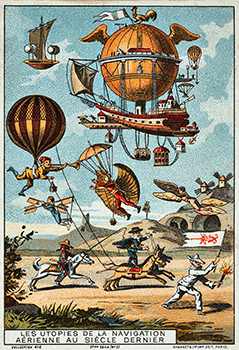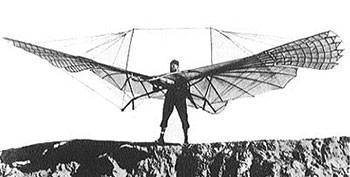Helen Papagiannis
How virtual reality can make the real world a better place
Can VR become “the ultimate empathy machine?”
 Virtual reality (VR) can make the impossible possible — the rules of physical reality need no longer apply. In VR, you strap on a special headset and leave the real world behind to enter a virtual one. You can fly like a bird high above Manhattan, or experience the feeling of weightlessness as an astronaut on a spaceship.
Virtual reality (VR) can make the impossible possible — the rules of physical reality need no longer apply. In VR, you strap on a special headset and leave the real world behind to enter a virtual one. You can fly like a bird high above Manhattan, or experience the feeling of weightlessness as an astronaut on a spaceship.
VR is reliant upon the illusion of being deeply engrossed in another space and time, far away from your current reality. In a split second you can travel to exotic locales or be on stage at a concert with your favourite musician. Gaming and entertainment are natural fits for VR experiences. A startup called The Void plans to open a set of immersive virtual reality theme parks called Virtual Entertainment Centers, with the first one opening in Pleasant Grove, Utah by June 2016.
This is an exciting time for developers and designers to be defining VR as a new experience medium. However, as the technology improves and consumer hardware and content become available in VR, we must ask: how can this new technology be applied to benefit humanity?
As it turns out, this question is being explored on a few early fronts. For example, SnowWorld, developed at the University of Washington Human Interface Technology (HIT) Lab in 1996 by Hunter Hoffman and David Patterson, was the first immersive VR world designed to reduce pain in adults and children. SnowWorld was specifically developed to help burn patients during wound care. Read more…
Designing beyond screens to augment the full human sensorium
A new reality is coming that will forever change the way we engage with our surroundings.
Register now for Solid Amsterdam, our conference exploring the intersections of manufacturing, design, hardware, software, and business strategy. The event will take place in Amsterdam on October 28, 2015.
 Virtual Reality (VR) strives to recreate the physical world in a virtual one. Augmented Reality (AR), on the other hand, can bring the digital into the physical world to create a hybrid reality. AR offers new ways of applying technology to immerse ourselves in our physical reality (rather than being removed from it), and even enhance it.
Virtual Reality (VR) strives to recreate the physical world in a virtual one. Augmented Reality (AR), on the other hand, can bring the digital into the physical world to create a hybrid reality. AR offers new ways of applying technology to immerse ourselves in our physical reality (rather than being removed from it), and even enhance it.
Interacting with screens is a big part of our everyday modern reality. We spend a great amount of time engaging with our world and each other through two-dimensional screens, whether via a smartphone, tablet, or computer. The world we live in, however, is three-dimensional and not flat: it is physical and involves the use of multiple senses. AR presents the opportunity to design beyond the screens we use today and create new experiences that better embody the full human sensorium.
In my last Radar article, I looked at how AR, wearable tech, and the Internet of Things (IoT) are augmenting the human experience. I highlighted how computer vision and new types of sensors are being combined to change the way we interact with and understand our surroundings. Here, I’ll look at how this can be extended by integrating the human senses beyond the visual — such as touch, taste, and smell — to further augment our reality. Read more…
Augmenting the human experience: AR, wearable tech, and the IoT
As augmented reality technologies emerge, we must place the focus on serving human needs.
Register now for Solid Amsterdam, October 28, 2015 — space is limited.
Augmented reality (AR), wearable technology, and the Internet of Things (IoT) are all really about human augmentation. They are coming together to create a new reality that will forever change the way we experience the world. As these technologies emerge, we must place the focus on serving human needs.The Internet of Things and Humans
Tim O’Reilly suggested the word “Humans” be appended to the term IoT. “This is a powerful way to think about the Internet of Things because it focuses the mind on the human experience of it, not just the things themselves,” wrote O’Reilly. “My point is that when you think about the Internet of Things, you should be thinking about the complex system of interaction between humans and things, and asking yourself how sensors, cloud intelligence, and actuators (which may be other humans for now) make it possible to do things differently.”
I share O’Reilly’s vision for the IoTH and propose we extend this perspective and apply it to the new AR that is emerging: let’s take the focus away from the technology and instead emphasize the human experience.
The definition of AR we have come to understand is a digital layer of information (including images, text, video, and 3D animations) viewed on top of the physical world through a smartphone, tablet, or eyewear. This definition of AR is expanding to include things like wearable technology, sensors, and artificial intelligence (AI) to interpret your surroundings and deliver a contextual experience that is meaningful and unique to you. It’s about a new sensory awareness, deeper intelligence, and heightened interaction with our world and each other. Read more…
The state of augmented reality
A look at AR today and how we need to design it for tomorrow.
Attend O’Reilly’s Solid Conference, June 23–25, in San Francisco. Solid is our conference exploring how the collision of software and hardware is fueling the creation of a software-enhanced, networked physical world. Helen Papagiannis will speak at Solid on June 24.
Unlike virtual reality (VR), augmented reality (AR) provides a gateway to a new dimension without the need to leave our physical world behind. We still see the real world around us in AR, whereas in VR, the real world is completely blocked out and replaced by a new world that immerses the user in a computer generated environment.AR today
The most common definition of AR to date is a digital overlay on top of the real world, consisting of computer graphics, text, video, and audio, which is interactive in real time. This is experienced through a smartphone, tablet, computer, or AR eyewear equipped with software and a camera. Examples of AR today include the translation of signs or menus into the language of your choice, pointing at and identifying stars and planets in the night sky, and delving deeper into a museum exhibit with an interactive AR guide. AR presents the opportunity to better understand and experience our world in unprecedented ways.
AR is rapidly gaining momentum (and extreme amounts of funding) with great advances and opportunities in science, design, and business. It is not often that a whole new communications medium is introduced to the world. AR will have a profound effect on the way we live, work, and play. Now is the time to imagine, design, and build our virtual future. Read more…


